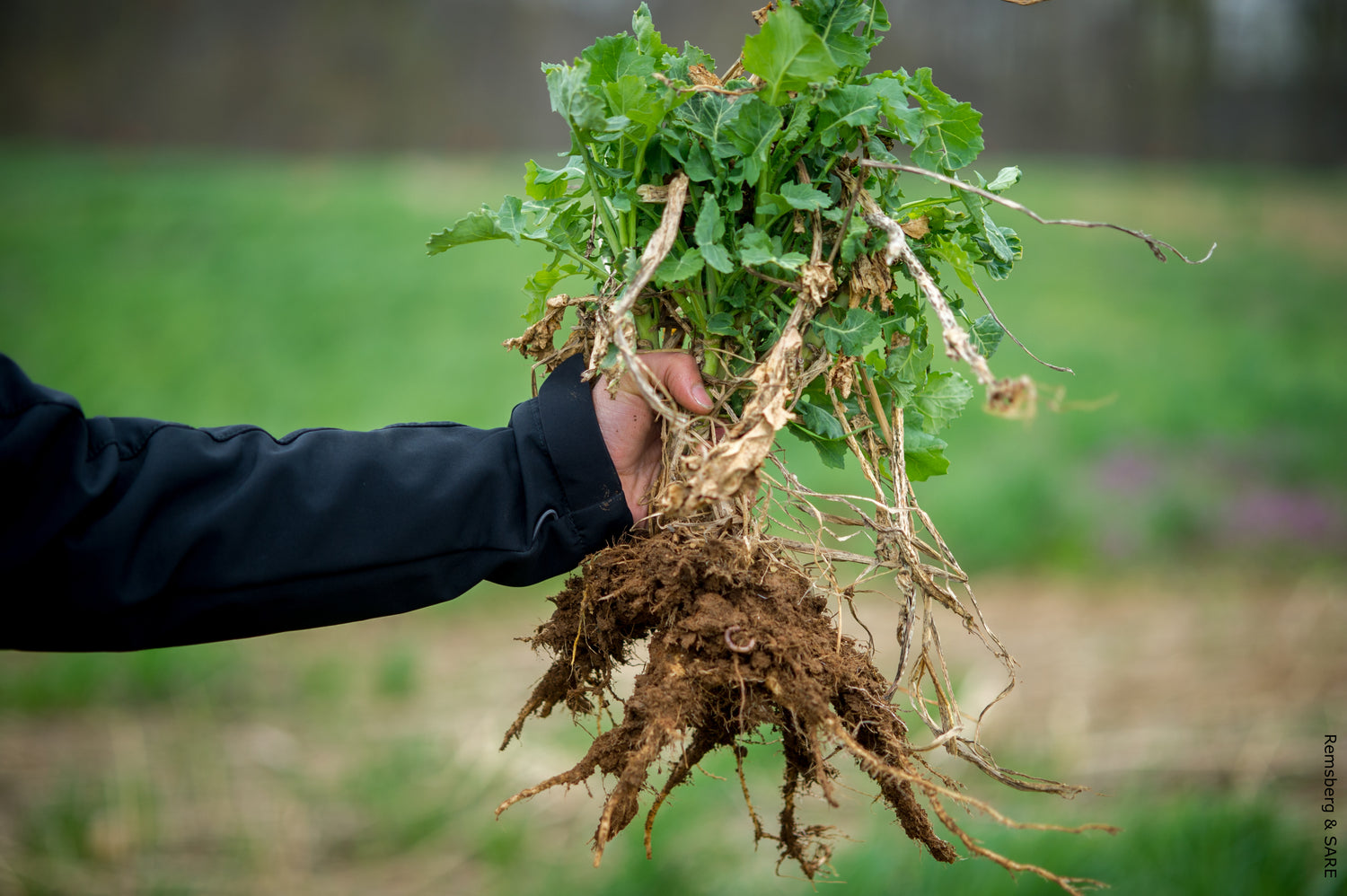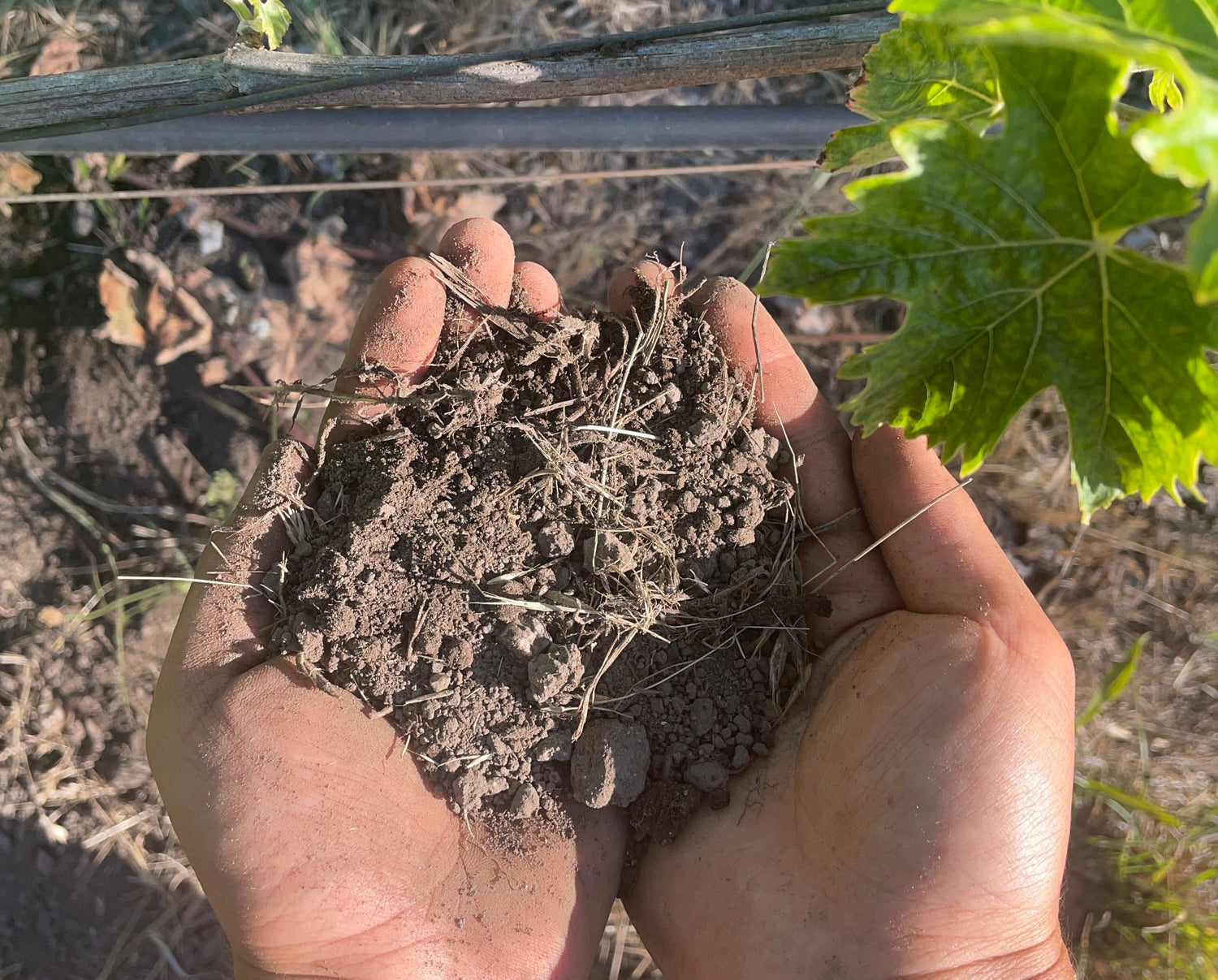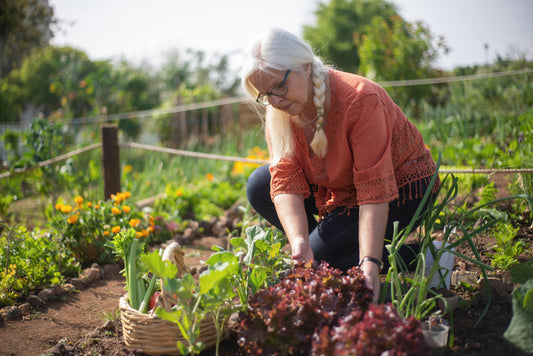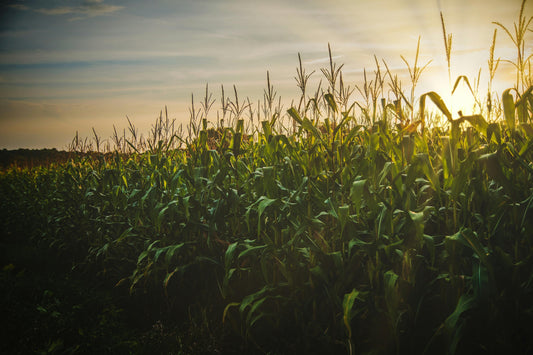Nestled in the rolling hills of North County San Diego, Rancho Santa Fe encompasses 36 square miles of premium agricultural and residential land characterized by distinctive soil conditions. This exclusive community, situated 25 miles north of downtown San Diego, features diverse terrain ranging from gentle valley floors to steep hillsides, each supporting unique soil environments that have shaped the area's agricultural heritage and contemporary luxury landscapes.
Geological and Climatic Foundations
Rancho Santa Fe sits within the Peninsular Ranges geological province, characterized by ancient crystalline bedrock, marine terraces, and alluvial valleys. The region experiences a Mediterranean climate with average annual rainfall of 10-12 inches (250-300 mm), concentrated primarily between December and March. This climate pattern, combined with the underlying Cretaceous-age granitic and metamorphic geology, creates distinct soil formation processes across elevation ranges from 200 to 1,200 feet above sea level.
The Natural Resources Conservation Service (NRCS) has documented over 35 different soil mapping units within Rancho Santa Fe through the Web Soil Survey. These soils have formed through various processes including weathering of the Santiago Peak Volcanics, decomposition of Jurassic and Cretaceous granitic rocks, and alluvial deposition from San Dieguito Creek and Escondido Creek watersheds.
According to the California Soil Resource Lab, approximately 45% of Rancho Santa Fe consists of residential and agricultural lands with intact soil profiles, 35% consists of steep slopes and natural habitat areas, and 20% includes developed areas where soil profiles have been modified for construction and landscaping.
Soil Formation Processes
Soil formation in Rancho Santa Fe follows classical pedogenic processes involving parent material, climate, organisms, topography, and time. Parent materials include weathered granitic rocks from the Southern California Batholith, metamorphic rocks of the Santiago Peak Volcanics, and Quaternary alluvial sediments from local creek systems.
The Mediterranean climate promotes specific weathering patterns with mild, wet winters causing gradual chemical weathering and long, dry summers leading to mineral accumulation in surface horizons. Native vegetation communities including coastal sage scrub (covering approximately 25% of undeveloped land), chaparral (covering 40% of hillslope areas), and riparian woodland contribute organic matter and influence soil chemistry through extensive root systems and seasonal leaf litter.
Topographic variation across the community's elevation range creates diverse microclimates and affects drainage patterns, leading to different soil development. The area's distinctive rolling topography, with slopes ranging from 2% to 50%, creates a mosaic of soil conditions within relatively small areas.
Major Soil Types and Distribution
Granitic Soils (Alfisols and Entisols)
Granitic soils dominate the hillslope areas of Rancho Santa Fe, covering approximately 18 square miles. These soils form from decomposed granite (DG) and are characterized by excellent drainage, coarse texture, and moderate fertility. The NRCS identifies several major granitic soil series including:
- Fallbrook Series: Coarse-loamy, mixed, superactive, thermic Typic Haploxeralfs - well-drained soils formed in material weathered from granitic rock
- Vista Series: Coarse-loamy, mixed, superactive, thermic Typic Haploxeralfs - moderately deep, well-drained soils on uplands
- Cieneba Series: Loamy, mixed, superactive, thermic, shallow Typic Haploxeralfs - shallow soils over granitic bedrock
These soils typically have organic matter content ranging from 1.0-3.5%, pH levels between 6.0-7.5, and excellent internal drainage with infiltration rates of 2-6 inches per hour, making them ideal for drought-tolerant landscaping and premium wine grape cultivation.
Clay Soils (Vertisols and Alfisols)
Clay-rich soils occur across approximately 8 square miles of Rancho Santa Fe, particularly in valley bottoms and areas with marine terrace deposits. These soils have clay content exceeding 30% and exhibit moderate to high shrink-swell potential. Major clay soil series include:
- Las Flores Series: Fine, smectitic, thermic Typic Haploxeralfs - deep, well-drained soils formed in alluvium
- Redding Series: Fine, mixed, superactive, thermic Abruptic Durixeralfs - moderately deep soils with hardpan layers
Clay soils have water-holding capacity of 0.12-0.18 inches per inch of soil, significantly higher than sandy soils, but present drainage challenges with infiltration rates often below 0.5 inches per hour. These soils are well-suited for water-efficient landscaping and support the area's renowned equestrian facilities.
Alluvial Soils (Entisols and Inceptisols)
Alluvial soils are found along San Dieguito Creek and Escondido Creek corridors, covering approximately 5 square miles. These fertile soils support some of Rancho Santa Fe's most productive agricultural areas, including avocado groves and citrus orchards. The Huerhuero and San Miguel series dominate these areas, with depths ranging from 4-8 feet and excellent agricultural potential.
Alluvial soils typically have organic matter content of 2-4%, balanced pH levels of 6.5-7.5, and moderate drainage characteristics that support both agricultural and residential landscaping applications.
Terrace Soils (Alfisols)
Marine terrace soils occur on the elevated terraces throughout Rancho Santa Fe, covering approximately 5 square miles. These soils, including the Olivenhain and Bonsall series, formed from ancient marine sediments and are characterized by good drainage, moderate fertility, and stable structure ideal for residential development.
Terrace soils have organic matter content ranging from 1.5-3.0%, pH levels between 6.8-7.8, and moderate water-holding capacity, making them suitable for both native and adapted landscape plants.
Soil Characteristics and Applications
| Soil Type | Area Coverage | Key Features | Primary Uses | Management Challenges |
|---|---|---|---|---|
| Granitic | 18 sq miles | Well-drained, coarse texture, 2-6 in/hr infiltration | Drought-tolerant landscaping, vineyards | Rapid nutrient leaching, erosion on slopes |
| Clay | 8 sq miles | Water-retentive, 30%+ clay content, stable | Equestrian facilities, water-wise gardens | Poor drainage, cracking, compaction |
| Alluvial | 5 sq miles | Fertile, deep profile, balanced drainage | Agriculture, orchards, premium landscaping | Flood potential, seasonal water table |
| Terrace | 5 sq miles | Stable, moderate fertility, good drainage | Residential development, golf courses | Hardpan layers, moderate fertility |
Environmental Challenges and Management
Wildfire Impacts and Post-Fire Soil Management
Rancho Santa Fe experiences significant wildfire risk, with major fires occurring approximately every 10-15 years. The 2007 Witch Fire burned over 12,000 acres in the area, and the 2014 Cocos Fire affected 1,995 acres. Post-fire conditions dramatically alter soil properties: organic matter is consumed, soil structure is compromised, and hydrophobic layers can form, increasing erosion rates by 5-50 times normal levels.
Post-fire soil management techniques include hydromulching on slopes exceeding 25%, installation of check dams in drainage areas, and strategic revegetation using fire-adapted native species. The Rancho Santa Fe Fire Protection District recommends immediate soil stabilization within 30 days of fire containment.
Erosion Control on Steep Slopes
The community's rolling topography creates erosion challenges on slopes exceeding 15% grade. Granitic soils are particularly susceptible to erosion during intense rainfall events. The San Diego County Department of Public Works reports that erosion rates on unprotected slopes can reach 10-25 tons per acre per year during major storm events.
Effective erosion control measures include terracing, retaining walls, and establishment of deep-rooted native vegetation. The Rancho Santa Fe Association's Covenant Design Review requires comprehensive erosion control plans for all hillside construction projects.
Soil Compaction from Equestrian Activities
With over 100 equestrian properties, horse-related soil compaction is a significant concern. Heavy horse traffic can increase soil bulk density from 1.2-1.4 g/cm³ to 1.6-1.8 g/cm³, reducing infiltration rates by 60-80%. Compacted soils in riding arenas and paddocks require specialized management including regular cultivation, drainage improvements, and footing amendments.
Soil Testing and Analysis
Laboratory Testing Options
The UC Master Gardener Program - San Diego County recommends soil testing every 2-3 years for residential landscapes and annually for agricultural operations. Basic soil tests cost $30-60 and include pH, electrical conductivity, organic matter content, and macronutrients.
Specialized testing for vineyard soils ranges from $150-300 per sample and includes micronutrient analysis, cation exchange capacity, and soil structure evaluation. The California Department of Food and Agriculture maintains certified laboratory listings for agricultural soil testing.
Field Testing Methods
Simple field tests include the ribbon test for clay content, percolation tests for drainage assessment, and pH testing using digital meters. The percolation test is particularly important in Rancho Santa Fe due to varying drainage conditions: dig a hole 12 inches deep, fill with water, and measure drainage rate. Rates below 1 inch per hour indicate drainage problems requiring soil amendments.
Soil Management Strategies
Organic Amendments and Soil Health
Compost addition at rates of 1-3 inches annually can significantly improve soil structure and water retention. Local facilities including the EDCO Organics facility in Escondido produce high-quality compost from regional green waste, processing over 100,000 tons annually.
For granitic soils, adding 2-4 inches of compost can increase water-holding capacity from 0.08 inches per inch to 0.12-0.15 inches per inch. Clay soils benefit from coarser organic matter additions including aged wood chips and decomposed granite to improve drainage and reduce compaction.
Native Plant Selection and Mediterranean Landscaping
The California Native Plant Society San Diego Chapter documents over 200 native plant species suitable for Rancho Santa Fe conditions. Native plants typically require 60-80% less water than traditional landscapes and are adapted to local soil conditions.
Recommended native plants for granitic soils include Ceanothus species (California lilac), Arctostaphylos species (manzanita), and Salvia species (native sages). For clay soils, Heteromeles arbutifolia (toyon), Rhus integrifolia (lemonade berry), and native bunch grasses provide excellent performance with minimal water requirements.
Vineyard Soil Management
Rancho Santa Fe's emerging wine industry benefits from the area's diverse soil conditions. Granitic soils on hillsides provide excellent drainage for premium wine grape production, while valley soils support vigorous vine growth. Vineyard soil management includes:
- Annual cover crop establishment to prevent erosion and add organic matter
- Soil compaction monitoring and subsoiling between vine rows
- Precise irrigation management based on soil moisture monitoring
- pH adjustment using agricultural lime to maintain optimal 6.5-7.0 range
Soil Management Process
Step 1: Conduct comprehensive soil testing including pH (optimal range 6.5-7.5 for most landscapes), nutrients, drainage rate, and organic matter content.
Step 2: Identify specific soil series through professional classification or detailed field assessment including texture, depth, and drainage characteristics.
Step 3: Apply appropriate amendments based on soil type - typically 1-2 inches of compost for clay soils, 2-4 inches for granitic soils, plus drainage improvements as needed.
Step 4: Select plants appropriate for local conditions, considering USDA Zone 10a climate, seasonal rainfall patterns, and soil-specific requirements.
Step 5: Install efficient irrigation systems with precipitation rates of 0.5-1.5 inches per hour matched to soil infiltration capacity and plant water needs.
Step 6: Implement erosion control measures including appropriate ground cover, mulching (2-3 inch depth), and slope stabilization techniques.
Step 7: Establish ongoing soil health monitoring through annual assessments, periodic testing, and documentation of landscape performance and soil changes.
Local Suppliers and Services
| Business Name | Location | Services |
|---|---|---|
| Solana Succulents | 355 N Highway 101, Solana Beach, CA 92075 | Drought-tolerant plants, Mediterranean landscaping, soil consultation |
| Walter Andersen Nursery - Rancho Bernardo | 12755 Danielson Ct, Poway, CA 92064 | Premium landscape plants, soil amendments, horticultural services |
Frequently Asked Questions
What makes Rancho Santa Fe soils unique compared to other San Diego areas?
Rancho Santa Fe soils are predominantly derived from granitic bedrock and marine terraces, creating excellent drainage and moderate fertility. Unlike coastal areas with sandy soils or inland valleys with heavy clay, Rancho Santa Fe offers diverse soil conditions within small areas, supporting both agricultural and residential uses. The area's elevation (200-1,200 feet) and rolling topography create microclimates that influence soil development.
Are granitic soils suitable for vegetable gardening?
Granitic soils can support vegetable gardening with proper amendments. Their excellent drainage prevents root rot but requires frequent irrigation and regular organic matter additions. Adding 3-4 inches of compost annually and installing drip irrigation can transform granitic soils into productive vegetable growing medium. Raised beds with imported soil provide an alternative for intensive vegetable production.
How do I manage soil on steep slopes for fire safety?
Fire-safe slope management requires establishing defensible space with fire-resistant native plants spaced 6-10 feet apart. Avoid planting highly flammable species like eucalyptus or pampas grass. Maintain soil stability through strategic terracing and deep-rooted plants like Ceanothus and native bunch grasses that won't easily ignite. Regular maintenance to remove dead plant material is essential.
What soil amendments work best for equestrian areas?
Compacted soils in riding arenas require specialized footing materials including sand, rubber chips, and fiber additives. Paddock areas benefit from deep cultivation (12-18 inches) followed by compost incorporation and reseeding with horse-safe grasses. Drainage improvements including French drains may be necessary in clay soil areas to prevent waterlogging during winter rains.
How often should I test soil in vineyard areas?
Vineyard soils require annual testing for pH, nutrients, and organic matter, with more detailed analysis every 3-5 years including micronutrients and soil structure. Seasonal monitoring of soil moisture helps optimize irrigation scheduling. Post-harvest soil testing guides cover crop selection and fertilizer applications for the following growing season.
What native plants thrive in Rancho Santa Fe's clay soils?
Native plants adapted to clay soils include Toyon (Heteromeles arbutifolia), Lemonade Berry (Rhus integrifolia), Coast Live Oak (Quercus agrifolia), and various native grasses like Purple Needlegrass (Stipa pulchra). These plants tolerate seasonal waterlogging and soil expansion/contraction while requiring minimal summer irrigation once established.
How can I improve drainage in terrace soils with hardpan layers?
Hardpan layers require mechanical disruption through deep ripping or excavation. Install French drains or subsurface drainage systems to redirect excess water. Organic matter additions above the hardpan and selection of plants with shallow root systems can work within existing constraints. Professional soil evaluation may be necessary for major landscape projects.
What are signs of soil compaction in residential landscapes?
Compaction indicators include water pooling on the surface, difficulty inserting a soil probe deeper than 6 inches, and poor plant performance despite adequate water and nutrients. Foot traffic areas and equipment routes are most susceptible. Core aeration and organic matter additions can restore soil structure in moderately compacted areas.
How do I select appropriate plants for different soil types?
Match plant water needs to soil drainage: drought-tolerant plants for granitic soils, water-wise plants for clay soils, and moderate-water plants for alluvial soils. Consider mature plant size, root depth requirements, and seasonal water needs. The Rancho Santa Fe Association's landscape guidelines provide approved plant lists for different soil conditions.
What fire-resistant landscaping works best with local soils?
Fire-resistant landscapes use widely-spaced, low-fuel plants like Rosemary, Lavender, and native salvias in granitic soils, or Toyon and Lemonade Berry in clay soils. Maintain 100-foot defensible space around structures with regular pruning and dead material removal. Avoid continuous plant coverage and create fuel breaks with decomposed granite or hardscape elements.
Conclusion
Rancho Santa Fe's 36 square miles showcase remarkable soil diversity, from well-drained granitic hillsides supporting premium vineyards to fertile alluvial valleys sustaining agricultural heritage. Understanding these soil characteristics is essential for successful landscaping, agricultural operations, and environmental stewardship in this prestigious North County San Diego community.
The community's 35+ soil mapping units reflect complex interactions between ancient geological processes, Mediterranean climate, and centuries of land use. Whether planning residential landscapes, vineyard development, or equestrian facilities, knowledge of local soil conditions ensures successful outcomes while preserving the area's natural beauty and agricultural legacy.
Proper soil management—including regular testing, appropriate amendments, and matching land uses to soil capabilities—supports both human activities and ecosystem health. By working with natural soil conditions and embracing Mediterranean landscaping principles, residents can create sustainable landscapes that thrive in Rancho Santa Fe's unique environment while addressing contemporary challenges including fire risk, water conservation, and erosion control.
References and Data Sources
- Natural Resources Conservation Service, United States Department of Agriculture. Web Soil Survey. Available at: https://websoilsurvey.sc.egov.usda.gov/
- University of California Division of Agriculture and Natural Resources. California Soil Resource Lab. Available at: https://casoilresource.lawr.ucdavis.edu/
- San Diego County Department of Agriculture, Weights and Measures. Crop Statistics and Agricultural Resources. Available at: https://www.sandiegocounty.gov/content/sdc/awm.html
- California Department of Forestry and Fire Protection. Fire Hazard Severity Zone Maps and Wildfire Statistics. Available at: https://www.fire.ca.gov/
- Rancho Santa Fe Fire Protection District. Defensible Space Guidelines and Fire Safety. Available at: https://www.rsffpd.org/
- California Native Plant Society, San Diego Chapter. Native Plants for San Diego County. Available at: https://www.cnps-sd.org/
- University of California Master Gardener Program, San Diego County. Soil and Plant Resources. Available at: https://ucanr.edu/sites/sdmg/
- San Diego County Water Authority. Water Conservation and Landscape Resources. Available at: https://www.sdcwa.org/
- Rancho Santa Fe Association. Covenant Design Review and Landscape Guidelines. Available at: https://www.rsfassociation.org/
- California Department of Food and Agriculture. Soil Testing Laboratory Certification. Available at: https://www.cdfa.ca.gov/is/inspection_services.html












